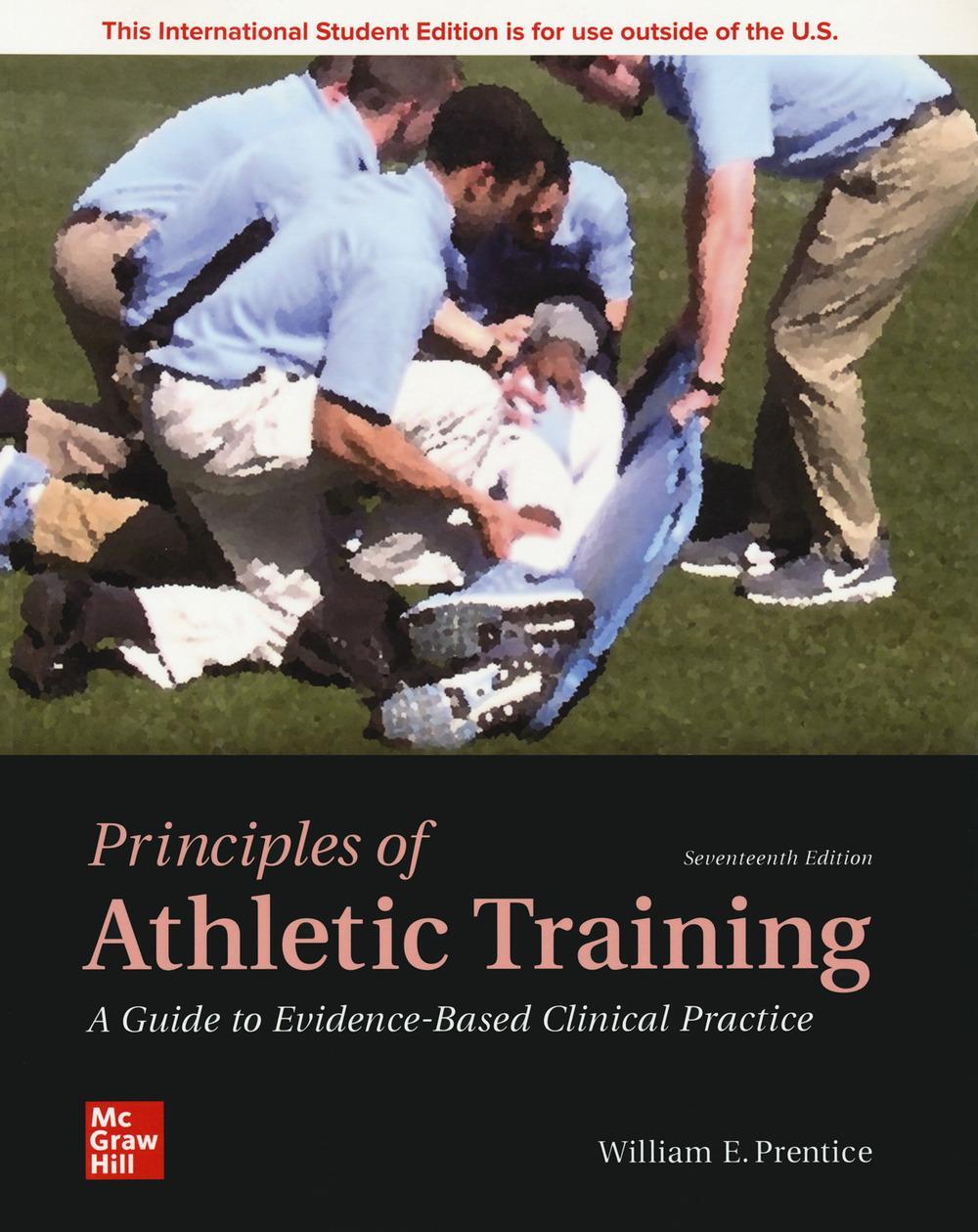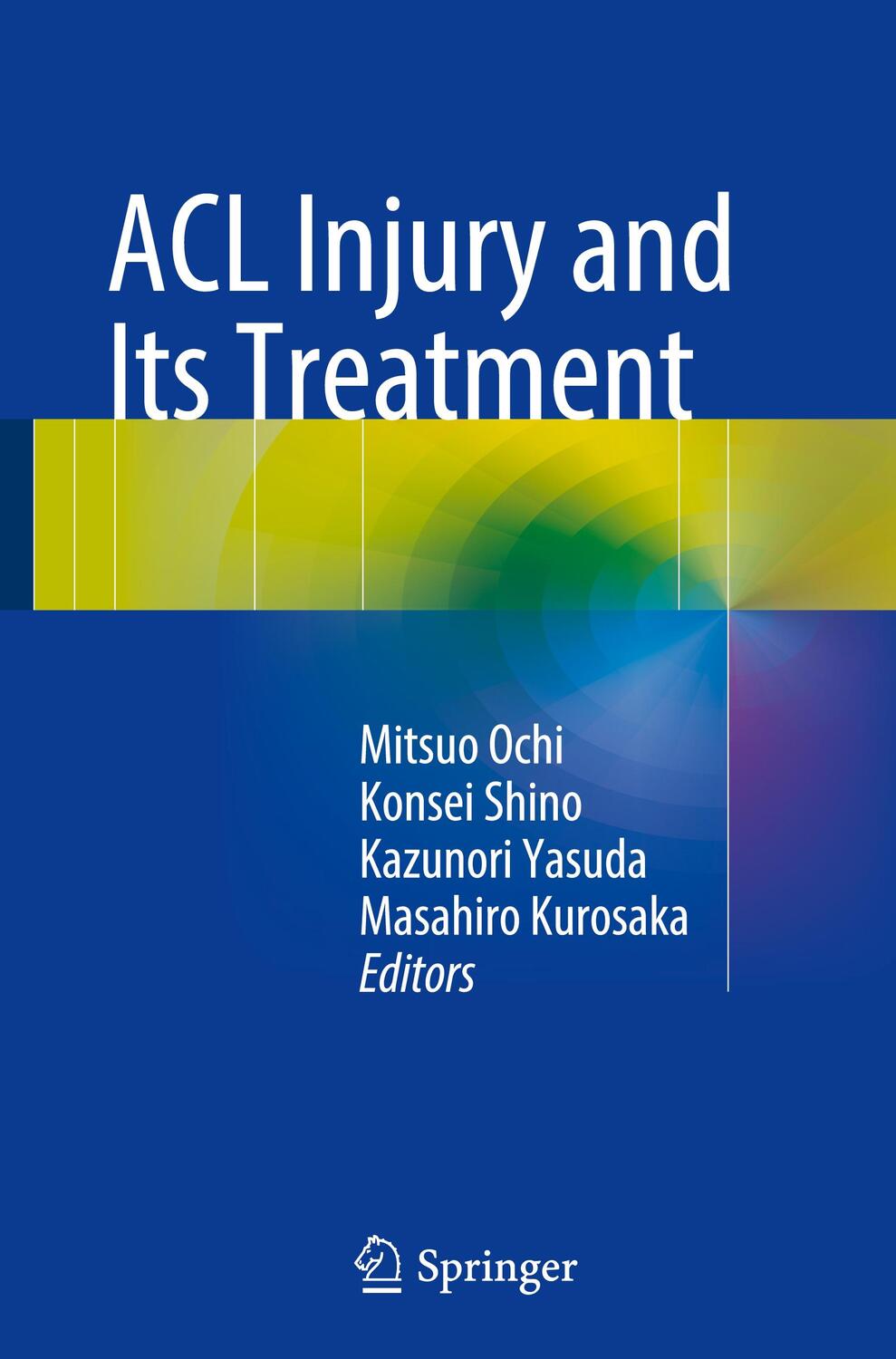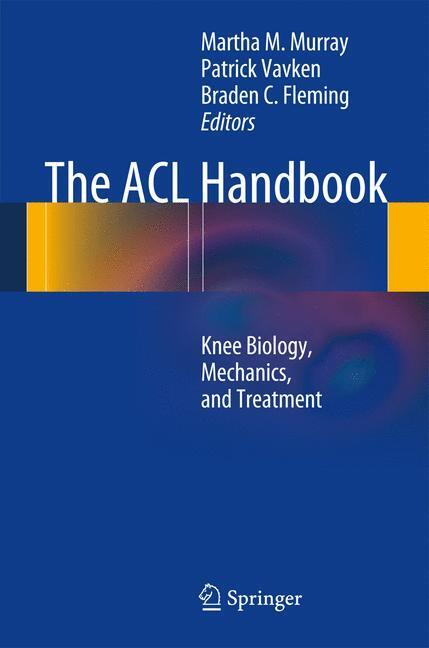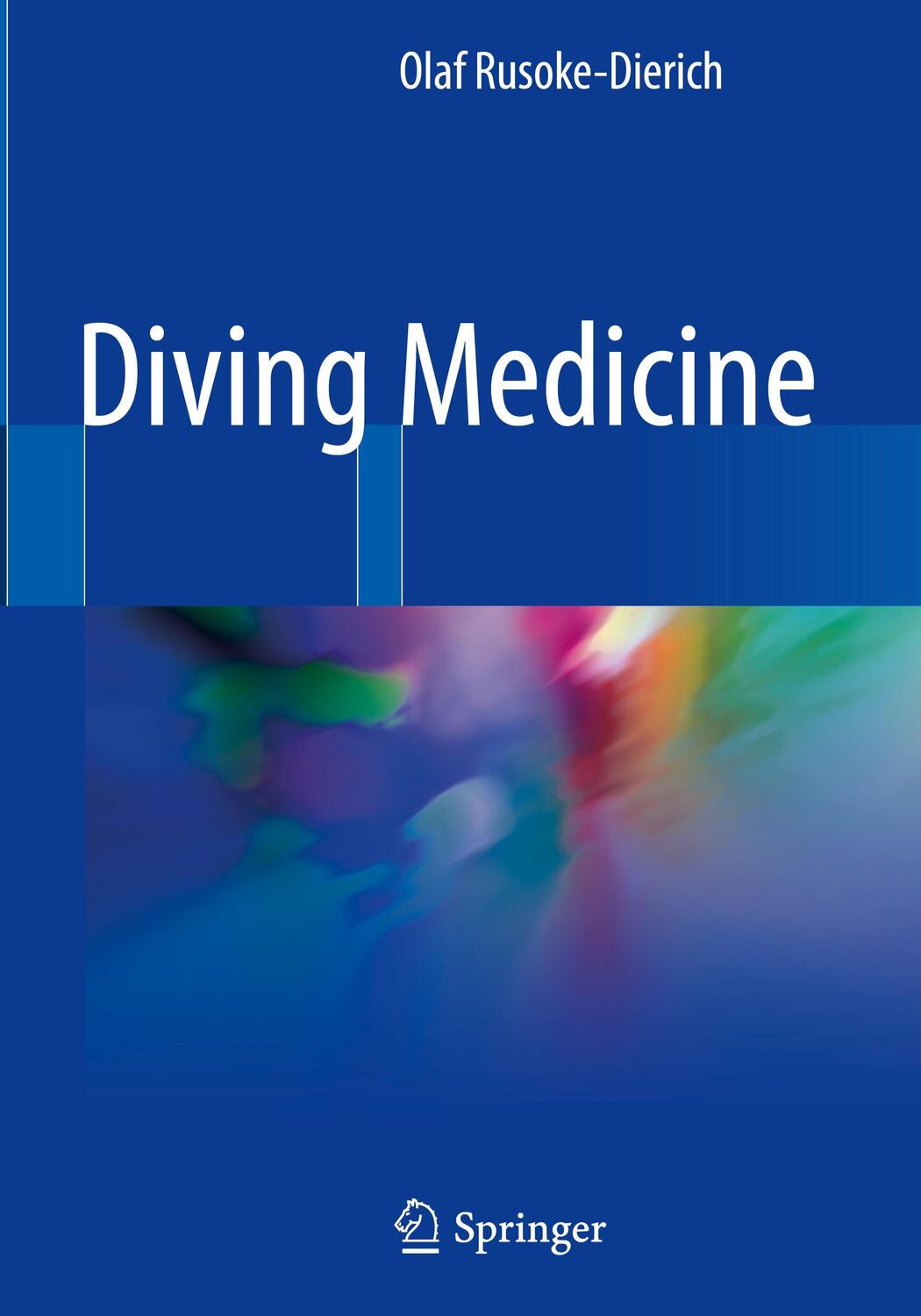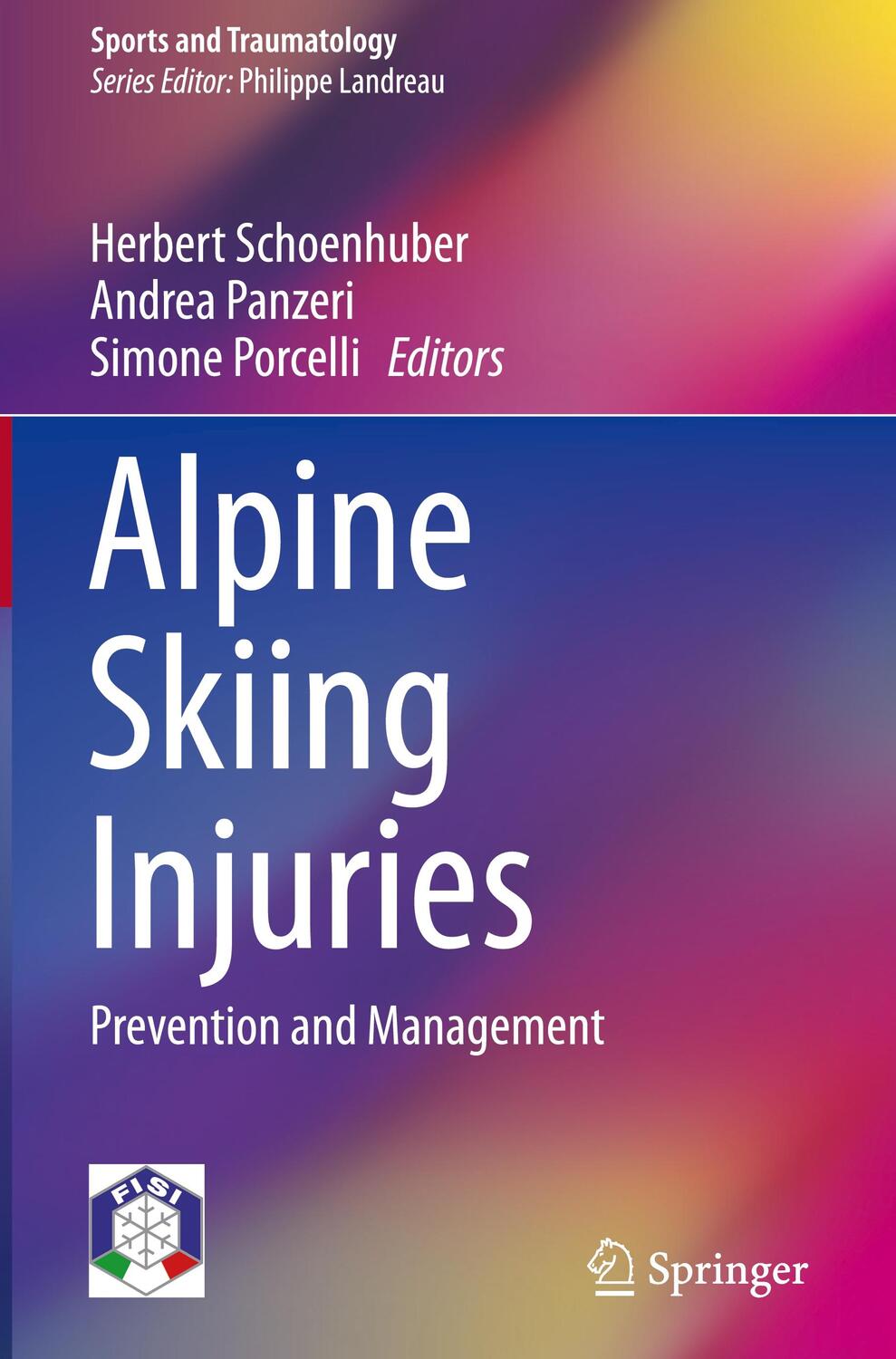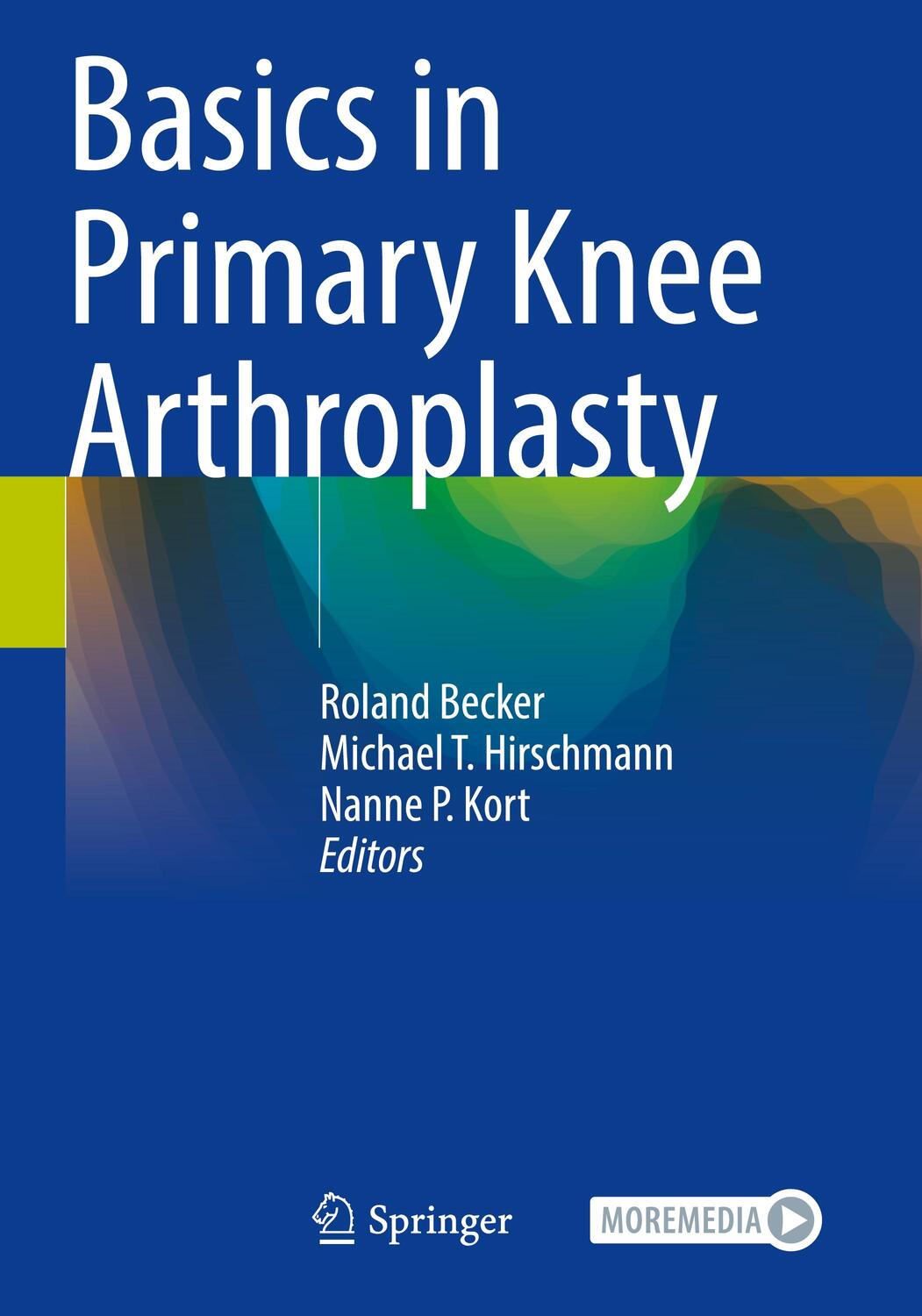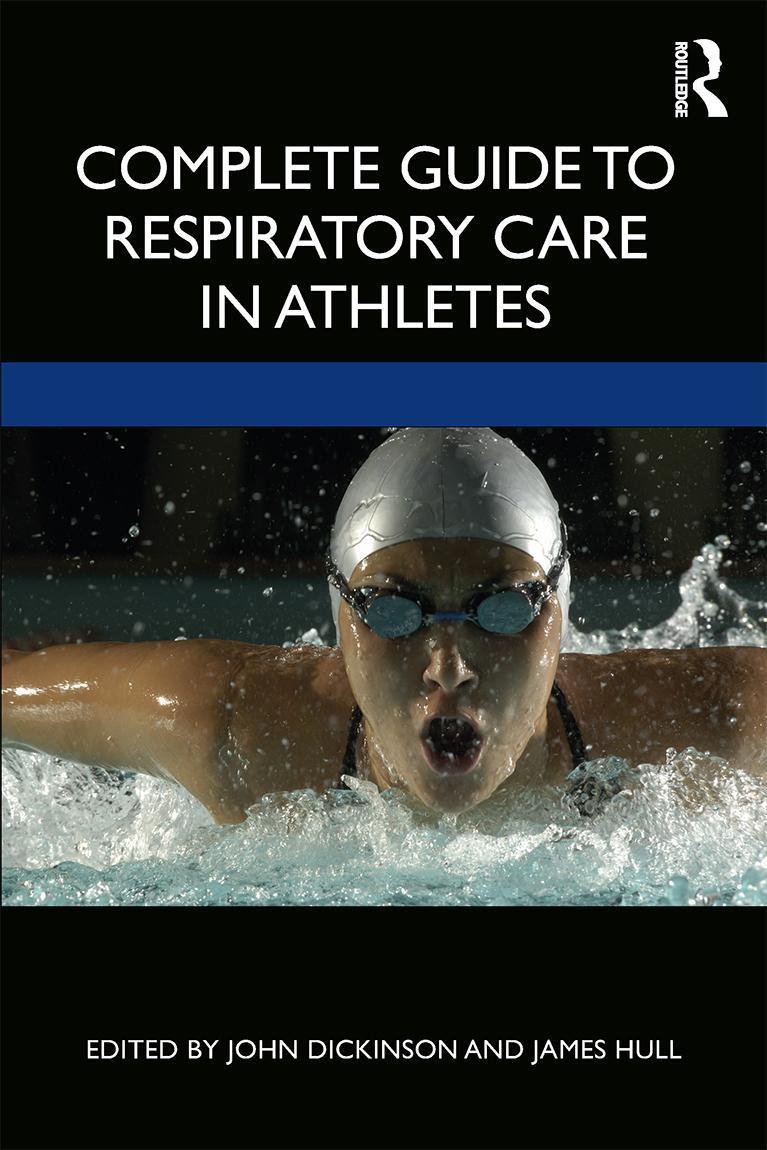82,30 €*
Versandkostenfrei per Post / DHL
Lieferzeit 1-2 Wochen
A Doody's Core Title for 2015!
Principles of Athletic Training: A Competency-Based Approach is designed to be used by athletic trainers in courses concerned with the scientific, evidence-based and clinical foundations of athletic training and sports medicine. The text leads the student from general foundations to specific concepts relative to injury prevention, evaluation, management, and rehabilitation. As the student progresses from beginning to end, he or she will understand the complexities of the profession of athletic training. An over-arching goal of the text is to make certain that each and every one of the educational competencies identified by the Education Council is specifically covered. After using this text the student should be able to apply the appropriate techniques and concepts in the day-to-day performance of his or her job as an athletic trainer.
McGraw-Hill Connect® is a subscription-based learning service accessible online through your personal computer or tablet. Choose this option if your instructor will require Connect to be used in the course. Your subscription to Connect includes the following:
. SmartBook® - an adaptive digital version of the course textbook that personalizes your reading experience based on how well you are learning the content.
. Access to your instructor's homework assignments, quizzes, syllabus, notes, reminders, and other important files for the course.
. Progress dashboards that quickly show how you are performing on your assignments and tips for improvement.
. The option to purchase (for a small fee) a print version of the book. This binder-ready, loose-leaf version includes free shipping.
Complete system requirements to use Connect can be found here: [...]
A Doody's Core Title for 2015!
Principles of Athletic Training: A Competency-Based Approach is designed to be used by athletic trainers in courses concerned with the scientific, evidence-based and clinical foundations of athletic training and sports medicine. The text leads the student from general foundations to specific concepts relative to injury prevention, evaluation, management, and rehabilitation. As the student progresses from beginning to end, he or she will understand the complexities of the profession of athletic training. An over-arching goal of the text is to make certain that each and every one of the educational competencies identified by the Education Council is specifically covered. After using this text the student should be able to apply the appropriate techniques and concepts in the day-to-day performance of his or her job as an athletic trainer.
McGraw-Hill Connect® is a subscription-based learning service accessible online through your personal computer or tablet. Choose this option if your instructor will require Connect to be used in the course. Your subscription to Connect includes the following:
. SmartBook® - an adaptive digital version of the course textbook that personalizes your reading experience based on how well you are learning the content.
. Access to your instructor's homework assignments, quizzes, syllabus, notes, reminders, and other important files for the course.
. Progress dashboards that quickly show how you are performing on your assignments and tips for improvement.
. The option to purchase (for a small fee) a print version of the book. This binder-ready, loose-leaf version includes free shipping.
Complete system requirements to use Connect can be found here: [...]
Historical Perspectives
Sports Medicine and Athletic Training
Employment Settings for the Athletic Trainer
Roles and Responsibilities of the Athletic Trainer
Referring the Patient to Other Medical and Nonmedical Support Services and Personnel
Recognition and Accreditation of the Athletic Trainer as an Allied Health Professional
Requirements for Certification as an Athletic Trainer
State Regulation of the Athletic Trainer
Future Directions for the Athletic Trainer
Summary
Websites
Chapter 2: Health Care Organization and Administration in Athletic TrainingEstablishing a System for Athletic Training Health Care
Issues Specific to Athletic Training Program Operation in the Secondary-School, College, or University Setting
Issues Specific to Athletic Training Program Operation in the Clinic, Hospital, Corporate, or Industrial Setting
Record Keeping
The Computer as a Tool for the Athletic Trainer
Collecting Injury Data
Summary
Chapter 3: Legal Concerns and Insurance IssuesLegal Concerns for the Athletic Trainer
Insurance Considerations
Third-Party Reimbursement
Summary
Websites
PART II: Risk ManagementChapter 4: Fitness and Conditioning TechniquesThe Relationship between Athletic Trainers and Strength and Conditioning Coaches
Principles of Conditioning
Warm-Up and Cooldown
Cardiorespiratory Endurance
The Importance of Muscular Strength, Endurance, and Power
Improving and Maintaining Flexibility
Fitness Assessment
Periodization in Conditioning
Summary
Websites
Chapter 5: Nutrition and SupplementsNutrition Basics
Energy Sources
Regulator Nutrients
Nutrient Requirements and Recommendations
Dietary Supplements
Eating and Drinking Practices
Glycogen Supercompensation
Body Composition and Weight Control
Summary
Websites
Chapter 6: Environmental ConsiderationsHyperthermia
Hypothermia
Altitude
Overexposure to Sun
Lightning Safety
Air Pollution
Circadian Dysrhythmia (Jet Lag)
Synthetic Turf
Summary
Websites
Chapter 7: Protective EquipmentSafety Standards for Sports Equipment and Facilities
Legal Concerns in Using Protective Equipment
Equipment Reconditioning and Recertification
Using Off-the-Shelf versus Custom Protective Equipment
Head Protection
Face Protection
Neck Protection
Trunk and Thorax Protection
Lower-Extremity Protective Equipment
Elbow, Wrist, and Hand Protection
Construction of Protective and Supportive Devices
Summary
Websites
Chapter 8: Wrapping and TapingWrapping
Nonelastic and Elastic Adhesive Taping
Common Taping Procedures
Kinesio Taping
Summary
Websites
PART III: Pathology of Sports InjuryChapter 9: Mechanisms and Characteristics of Musculoskeletal and Nerve TraumaMechanical Injury
Musculotendinous Unit Injuries
Synovial Joint Injuries
Bone Injuries
Nerve Trauma
Body Mechanics and Injury Susceptibility
Summary
Websites
Chapter 10: Tissue Response to InjuryThe Healing Process
Soft-Tissue Healing
Bone Healing
Pain
Summary
Websites
PART IV: Management SkillsChapter 11: Psychosocial Intervention for Sports Injuries and IllnessesThe Psychological Response to Injury
The Athlete and the Sociological Response to Injury
Predictors of Injury
Reacting to Athletes with Injuries
Psychological Factors in the Rehabilitation Process
Mental Training Techniques
Mental Disorders
Summary
Websites
Chapter 12: On-the-Field Acute Care and Emergency ProceduresThe Emergency Action Plan
Principles of On-the-Field Injury Assessment
The Primary Survey
The Secondary Survey
Moving and Transporting the Injured Patient
Emergency Emotional Care
Proper Fit and Use of the Crutch or Cane
Summary
Websites
Chapter 13: Off-the-Field Injury EvaluationClinical Evaluation and Diagnosis
Basic Knowledge Requirements
Progress Evaluations
Documenting Injury Evaluation Information
SOAP Notes
Additional Diagnostic Tests Used by a Physician
Ergonomic Risk Assessment
Summary
Websites
Chapter 14: Infectious Diseases, Bloodborne Pathogens, and Universal PrecautionsInfectious Diseases
Bloodborne Pathogens
Universal Precautions in an Athletic Environment
Summary
Websites
Chapter 15: Using Therapeutic ModalitiesLegal Concerns
Classification of Therapeutic Modalities
Thermal Conductive Energy Modalities
Acoustic Modalities
Mechanical Modalities
Modalities Not Commonly Used by Athletic Trainers
Recording Therapeutic Modality Treatments
Safety in Using Therapeutic Modalities
Evidence-Based Data Regarding Therapeutic Modality Use
Summary
Websites
Chapter 16: Using Therapeutic Exercise in RehabilitationThe Athletic Trainer's Approach to Rehabilitation
Therapeutic Exercise versus Conditioning Exercise
Sudden Physical Inactivity and Injury Immobilization
Major Components of a Rehabilitation Program
Developing a Rehabilitation Plan
Additional Approaches to Therapeutic Exercise in Rehabilitation
Purchasing and Maintaining Therapeutic Exercise Equipment
Summary
Websites
Chapter 17: Pharmacology, Drugs, and SportsWhat is a Drug?
Pharmacokinetics
Legal Concerns in Administering versus Dispensing Drugs
Selected Therapeutic Drugs
Drugs that can Increase the Rate of Heat Illness
Protocols for Using Over-the-Counter Medications
Substance Abuse Among Athletes
Drug Testing in Athletes
Summary
Websites
PART V: Musculoskeletal ConditionsChapter 18: The FootFoot Anatomy
Functional Anatomy and Foot Biomechanics
Prevention of Foot Injuries
Foot Assessment
Recognition and Management of Specific
Injuries
Foot Rehabilitation
Summary
Websites
Chapter 19: The Ankle and Lower LegAnatomy of the Lower Leg and Ankle
Functional Anatomy
Preventing Injury to the Lower Leg and Ankle
Assessing the Lower Leg and Ankle
Recognition of Specific Injuries
Rehabilitation Techniques for the Lower Leg and Ankle
Summary
Websites
Chapter 20: The Knee and Related StructuresAnatomy of the Lower Leg and Ankle
Functional Anatomy
Preventing Injury to the Lower Leg and Ankle
Assessing the Lower Leg and Ankle
Recognition of Specific Injuries
Rehabilitation Techniques for the Lower Leg and Ankle
Summary
Websites
Chapter 21: The Thigh, Hip, Groin, and PelvisAnatomy of the Thigh
Functional Anatomy of the Thigh
Assessment of the Thigh
Prevention of Injuries to the Thigh, Hip, Groin, and Pelvic Region
Recognition and Management of...
| Erscheinungsjahr: | 2020 |
|---|---|
| Fachbereich: | Andere Fachgebiete |
| Genre: | Medizin |
| Rubrik: | Wissenschaften |
| Medium: | Taschenbuch |
| Seiten: | 1042 |
| Inhalt: | Kartoniert / Broschiert |
| ISBN-13: | 9781260570939 |
| ISBN-10: | 1260570932 |
| Sprache: | Englisch |
| Einband: | Kartoniert / Broschiert |
| Autor: | Prentice, William |
| Hersteller: | McGraw-Hill Education |
| Maße: | 215 x 275 x 38 mm |
| Von/Mit: | William Prentice |
| Erscheinungsdatum: | 27.04.2020 |
| Gewicht: | 2,168 kg |
Historical Perspectives
Sports Medicine and Athletic Training
Employment Settings for the Athletic Trainer
Roles and Responsibilities of the Athletic Trainer
Referring the Patient to Other Medical and Nonmedical Support Services and Personnel
Recognition and Accreditation of the Athletic Trainer as an Allied Health Professional
Requirements for Certification as an Athletic Trainer
State Regulation of the Athletic Trainer
Future Directions for the Athletic Trainer
Summary
Websites
Chapter 2: Health Care Organization and Administration in Athletic TrainingEstablishing a System for Athletic Training Health Care
Issues Specific to Athletic Training Program Operation in the Secondary-School, College, or University Setting
Issues Specific to Athletic Training Program Operation in the Clinic, Hospital, Corporate, or Industrial Setting
Record Keeping
The Computer as a Tool for the Athletic Trainer
Collecting Injury Data
Summary
Chapter 3: Legal Concerns and Insurance IssuesLegal Concerns for the Athletic Trainer
Insurance Considerations
Third-Party Reimbursement
Summary
Websites
PART II: Risk ManagementChapter 4: Fitness and Conditioning TechniquesThe Relationship between Athletic Trainers and Strength and Conditioning Coaches
Principles of Conditioning
Warm-Up and Cooldown
Cardiorespiratory Endurance
The Importance of Muscular Strength, Endurance, and Power
Improving and Maintaining Flexibility
Fitness Assessment
Periodization in Conditioning
Summary
Websites
Chapter 5: Nutrition and SupplementsNutrition Basics
Energy Sources
Regulator Nutrients
Nutrient Requirements and Recommendations
Dietary Supplements
Eating and Drinking Practices
Glycogen Supercompensation
Body Composition and Weight Control
Summary
Websites
Chapter 6: Environmental ConsiderationsHyperthermia
Hypothermia
Altitude
Overexposure to Sun
Lightning Safety
Air Pollution
Circadian Dysrhythmia (Jet Lag)
Synthetic Turf
Summary
Websites
Chapter 7: Protective EquipmentSafety Standards for Sports Equipment and Facilities
Legal Concerns in Using Protective Equipment
Equipment Reconditioning and Recertification
Using Off-the-Shelf versus Custom Protective Equipment
Head Protection
Face Protection
Neck Protection
Trunk and Thorax Protection
Lower-Extremity Protective Equipment
Elbow, Wrist, and Hand Protection
Construction of Protective and Supportive Devices
Summary
Websites
Chapter 8: Wrapping and TapingWrapping
Nonelastic and Elastic Adhesive Taping
Common Taping Procedures
Kinesio Taping
Summary
Websites
PART III: Pathology of Sports InjuryChapter 9: Mechanisms and Characteristics of Musculoskeletal and Nerve TraumaMechanical Injury
Musculotendinous Unit Injuries
Synovial Joint Injuries
Bone Injuries
Nerve Trauma
Body Mechanics and Injury Susceptibility
Summary
Websites
Chapter 10: Tissue Response to InjuryThe Healing Process
Soft-Tissue Healing
Bone Healing
Pain
Summary
Websites
PART IV: Management SkillsChapter 11: Psychosocial Intervention for Sports Injuries and IllnessesThe Psychological Response to Injury
The Athlete and the Sociological Response to Injury
Predictors of Injury
Reacting to Athletes with Injuries
Psychological Factors in the Rehabilitation Process
Mental Training Techniques
Mental Disorders
Summary
Websites
Chapter 12: On-the-Field Acute Care and Emergency ProceduresThe Emergency Action Plan
Principles of On-the-Field Injury Assessment
The Primary Survey
The Secondary Survey
Moving and Transporting the Injured Patient
Emergency Emotional Care
Proper Fit and Use of the Crutch or Cane
Summary
Websites
Chapter 13: Off-the-Field Injury EvaluationClinical Evaluation and Diagnosis
Basic Knowledge Requirements
Progress Evaluations
Documenting Injury Evaluation Information
SOAP Notes
Additional Diagnostic Tests Used by a Physician
Ergonomic Risk Assessment
Summary
Websites
Chapter 14: Infectious Diseases, Bloodborne Pathogens, and Universal PrecautionsInfectious Diseases
Bloodborne Pathogens
Universal Precautions in an Athletic Environment
Summary
Websites
Chapter 15: Using Therapeutic ModalitiesLegal Concerns
Classification of Therapeutic Modalities
Thermal Conductive Energy Modalities
Acoustic Modalities
Mechanical Modalities
Modalities Not Commonly Used by Athletic Trainers
Recording Therapeutic Modality Treatments
Safety in Using Therapeutic Modalities
Evidence-Based Data Regarding Therapeutic Modality Use
Summary
Websites
Chapter 16: Using Therapeutic Exercise in RehabilitationThe Athletic Trainer's Approach to Rehabilitation
Therapeutic Exercise versus Conditioning Exercise
Sudden Physical Inactivity and Injury Immobilization
Major Components of a Rehabilitation Program
Developing a Rehabilitation Plan
Additional Approaches to Therapeutic Exercise in Rehabilitation
Purchasing and Maintaining Therapeutic Exercise Equipment
Summary
Websites
Chapter 17: Pharmacology, Drugs, and SportsWhat is a Drug?
Pharmacokinetics
Legal Concerns in Administering versus Dispensing Drugs
Selected Therapeutic Drugs
Drugs that can Increase the Rate of Heat Illness
Protocols for Using Over-the-Counter Medications
Substance Abuse Among Athletes
Drug Testing in Athletes
Summary
Websites
PART V: Musculoskeletal ConditionsChapter 18: The FootFoot Anatomy
Functional Anatomy and Foot Biomechanics
Prevention of Foot Injuries
Foot Assessment
Recognition and Management of Specific
Injuries
Foot Rehabilitation
Summary
Websites
Chapter 19: The Ankle and Lower LegAnatomy of the Lower Leg and Ankle
Functional Anatomy
Preventing Injury to the Lower Leg and Ankle
Assessing the Lower Leg and Ankle
Recognition of Specific Injuries
Rehabilitation Techniques for the Lower Leg and Ankle
Summary
Websites
Chapter 20: The Knee and Related StructuresAnatomy of the Lower Leg and Ankle
Functional Anatomy
Preventing Injury to the Lower Leg and Ankle
Assessing the Lower Leg and Ankle
Recognition of Specific Injuries
Rehabilitation Techniques for the Lower Leg and Ankle
Summary
Websites
Chapter 21: The Thigh, Hip, Groin, and PelvisAnatomy of the Thigh
Functional Anatomy of the Thigh
Assessment of the Thigh
Prevention of Injuries to the Thigh, Hip, Groin, and Pelvic Region
Recognition and Management of...
| Erscheinungsjahr: | 2020 |
|---|---|
| Fachbereich: | Andere Fachgebiete |
| Genre: | Medizin |
| Rubrik: | Wissenschaften |
| Medium: | Taschenbuch |
| Seiten: | 1042 |
| Inhalt: | Kartoniert / Broschiert |
| ISBN-13: | 9781260570939 |
| ISBN-10: | 1260570932 |
| Sprache: | Englisch |
| Einband: | Kartoniert / Broschiert |
| Autor: | Prentice, William |
| Hersteller: | McGraw-Hill Education |
| Maße: | 215 x 275 x 38 mm |
| Von/Mit: | William Prentice |
| Erscheinungsdatum: | 27.04.2020 |
| Gewicht: | 2,168 kg |

